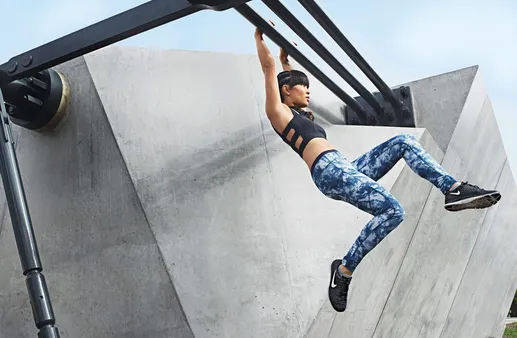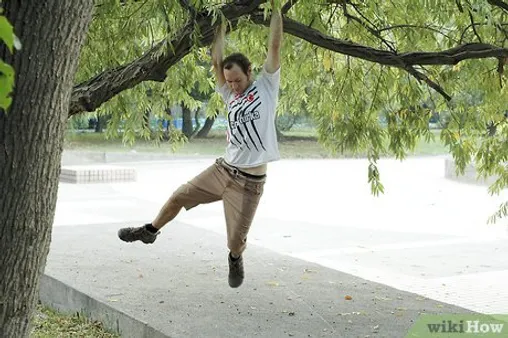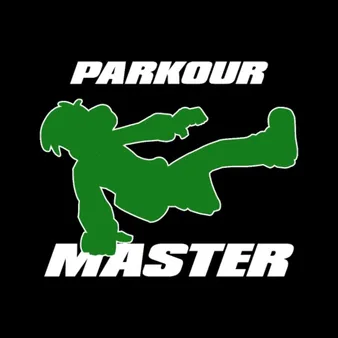Table of Contents
Welcome to the ultimate guide on How to train like a parkour . Whether you're a beginner looking to break into the exciting world of parkour, an experienced practitioner looking to refine your skills, or simply curious about this dynamic discipline, this comprehensive resource will provide you with the knowledge and techniques you need to master the urban landscape. Join us as we explore the benefits of parkour, delve into essential training methods, and unravel the secrets to performing incredible feats of athleticism like a seasoned parkour pro. Get ready to unleash your inner athlete and discover the incredible possibilities of movement with Kizworld, your trusted source for parkour excellence.
How to Train Like a Parkour : Achieve Thrilling Movement and Conquer Urban Challenges
I. How to Get Started with Parkour Training
How to Get Started with Parkour Training
Find a Qualified Instructor
Learning parkour from a qualified instructor is the safest and most effective way to get started. A good instructor will be able to teach you the proper techniques and help you progress safely. Look for an instructor who is certified by a reputable organization, such as the American Parkour Association or the World Freerunning Parkour Federation.
Here are some tips for finding a qualified parkour instructor:
- Ask around at your local gym or fitness center.
- Search online for parkour classes in your area.
- Read reviews of different instructors before you make a decision.
Choose the Right Gear
You don't need a lot of special gear to get started with parkour, but there are a few things you'll need to make sure you have.
- Comfortable clothing: Wear clothes that you can move easily in and that won't restrict your range of motion.
- Sturdy shoes: You'll need shoes that provide good support and traction. Running shoes or cross-training shoes are a good option.
- Crash pad: A crash pad is a thick, padded mat that you can use to land on when you're practicing your moves. This will help to protect you from injuries.
The Best Parkour Equipment and Gear
Start with Basic Movements
Once you have the right gear, you can start learning the basic movements of parkour. These movements include:
- Landing: Learning how to land properly is essential for preventing injuries. When you land, you should always try to land on your feet with your knees slightly bent.
- Precision jumps: Precision jumps are jumps that are performed with accuracy and control. They are used to clear obstacles and to reach specific targets.
- Vaults: Vaults are moves that are used to overcome obstacles. They can be performed over walls, fences, and other objects.
- Wall runs: Wall runs are moves that are used to run up walls. They are used to gain height and to access different areas.
- Climbs: Climbs are moves that are used to climb up walls and other objects. They are used to reach higher areas and to access different routes.
How to Learn the Basic Parkour Skills and Movements
Safety Considerations
Parkour can be a dangerous activity, so it's important to take safety precautions. Here are a few things you can do to stay safe while you're training:
- Always warm up before you start training.
- Start slowly and gradually increase the difficulty of your moves.
- Be aware of your surroundings and avoid training in dangerous areas.
- Train with a buddy so that you can spot each other.
- Listen to your body and stop training if you're feeling pain.
II. Developing Fundamental Skills
Developing Fundamental Skills
Landings
Learning how to land properly is crucial in parkour. Develop the ability to absorb impact by landing softly on the balls of your feet, then quickly transitioning to a flat-footed position. Practice landing from different heights to gain confidence and improve your technique.
- Focus on controlling your body's momentum.
- Bend your knees and hips to absorb the impact.
- Land softly on the balls of your feet.
- Choose the right footwear that provides adequate cushioning.
Precision Jumps
Mastering precision jumps is essential for parkour practitioners. Accurately judging distances and executing jumps safely requires practice and technique. Develop the ability to measure distances and time your jumps to land precisely on intended surfaces.
- Start with short jumps and gradually increase the distance as you gain confidence.
- Focus on maintaining a steady gaze on your landing spot.
- Keep your body straight and your feet together during the jump.
- Learn to adapt your jump to different surfaces and obstacles.
Vaults
Vaults are dynamic movements that allow you to overcome obstacles gracefully. Whether it's a wall, railing, or other barrier, learn the techniques for different types of vaults, such as the basic vault, kong vault, and speed vault. Practice these vaults to develop the strength, agility, and coordination required for successful execution.
- Beginners can start with basic vaults and gradually progress to more complex ones.
- Master the proper technique for each vault to ensure safety.
- Practice vaults over various obstacles to enhance your adaptability.
Wall Runs
Wall runs add an exciting dimension to parkour, enabling you to scale walls and navigate urban environments with fluidity. Develop the strength and technique to propel yourself up walls, maintaining control and momentum throughout the movement. Practice wall runs at different heights and angles to become proficient in this dynamic skill.
- Start with short wall runs and gradually increase the height as you gain confidence.
- Use your arms and legs to generate power and maintain momentum.
- Keep your body close to the wall to maintain control.
- Experiment with different techniques to find the one that suits you best.
Climbs
Climbing is an integral part of parkour, allowing you to ascend obstacles and reach new heights. Whether it's scaling a wall, scrambling up a rock face, or navigating a cargo net, learn the techniques for different types of climbs. Practice these climbs to develop the upper body strength, grip strength, and coordination required for successful execution.
Type |
|---|
Mantle |
Cat Leap |
Fencing Response |
III. Creating an Effective Training Routine
Creating an Effective Training Routine
Establishing a well-structured training routine is crucial for progressive development in parkour. A comprehensive plan should incorporate foundational skills, intermediate techniques, and advanced maneuvers, gradually building upon your current abilities.
Begin by mastering the basics, such as landings, precision jumps, vaults, wall runs, and climbs. These foundational movements form the cornerstone of parkour and provide a solid foundation for more complex techniques. Refer to our detailed guide on mastering basic gymnastics skills for in-depth instructions.
- Warm-up: Dynamic stretches and light cardio to prepare your body for training.
- Skill Practice: Focus on specific techniques, such as vaults or wall runs, with repetitions to improve form and consistency.
- Strength Training: Incorporate exercises like squats, push-ups, and pull-ups to enhance muscular strength and power.
- Speed and Agility Drills: Work on explosive movements like sprints, plyometrics, and agility ladder drills to improve speed and coordination.
- Cool-down: Wind down with static stretches to promote flexibility and prevent muscle tightness.
Training Frequency | Duration | Rest |
|---|---|---|
3-4 days per week | 45-60 minutes per session | 1-2 minutes between sets |
Once you've gained proficiency in fundamental skills, progress to intermediate techniques, including the cat leap, kong vault, tic tac, wall flip, and muscle-up. These moves require a higher level of coordination, strength, and agility. Refer to our comprehensive guide on flexibility and mobility in gymnastics to complement your parkour training.
When ready, tackle advanced parkour moves such as the speed vault, lazy vault, back flip, gainer, and other complex maneuvers. These techniques demand exceptional skills, strength, and risk assessment, so approach them gradually and with proper supervision.
Remember, safety should always be a top priority. Warm up before training, listen to your body, and choose appropriate training environments. Consider training with a buddy for added safety and motivation. Refer to our article on common gymnastics injuries and prevention to stay safe while training.
Continuous improvement in parkour requires ongoing practice, realistic goal setting, cross-training with other sports, and joining a parkour community for support and motivation. With dedication and persistence, you can elevate your parkour skills and conquer new challenges.
IV. Safety Tips for Parkour Training
Safety Tips for Parkour Training
Warm-up and Cool-down
Before starting any parkour training session, it's crucial to warm up your muscles to prepare them for the intense movements and impacts. This can include light jogging, dynamic stretches, and exercises that activate the core and major muscle groups. Similarly, after your training session, take time to cool down with static stretches to help your muscles recover and prevent soreness.
- How to Improve Your Flexibility and Mobility with Gymnastics
- The Best Gymnastics Exercises for Core Strength
Listen to Your Body
Pay attention to your body's signals and limitations. If you feel pain or discomfort during a movement, stop immediately and assess the situation. Pushing through pain can lead to injuries. It's better to take a break, rest, and consult with a qualified instructor if necessary.
Choose Appropriate Training Environments
Select training environments that are safe and suitable for parkour. Avoid slippery surfaces, uneven terrain, and areas with obstacles that could cause injury. If you're training in an urban environment, be aware of your surroundings and potential hazards like traffic, pedestrians, and uneven surfaces.
Train with a Buddy
Training with a partner or in a group can enhance safety and enjoyment. Spotting each other during challenging moves can help prevent accidents and injuries. Additionally, having training partners can motivate you to push your limits and progress faster.
V. Conclusion
As you continue your parkour journey, remember that consistency, dedication, and perseverance are key. Embrace the challenges, learn from your mistakes, and never stop pushing your limits. With unwavering commitment and a passion for the art of movement, you'll find yourself soaring through the urban landscape with grace, agility, and the confidence of a true parkour . The world is your playground, so seize the opportunity to explore it in a whole new way. Unleash your inner athlete, challenge yourself, and discover the incredible things you're capable of. Welcome to the world of parkour, where boundaries are meant to be pushed and limits are meant to be broken.